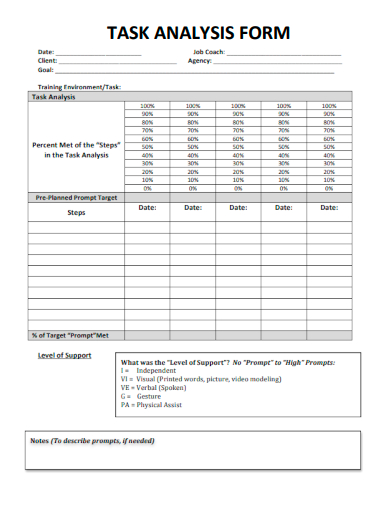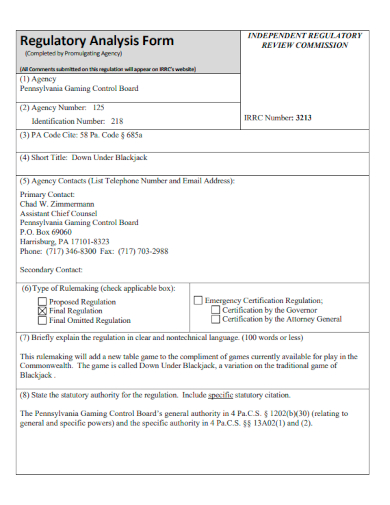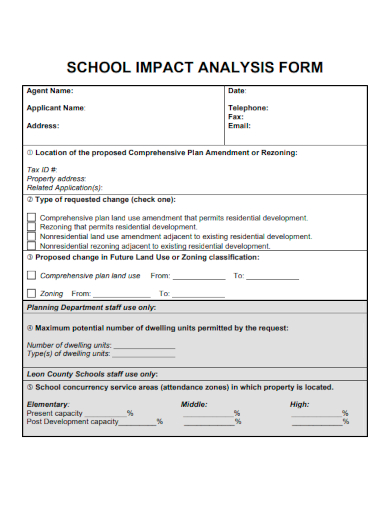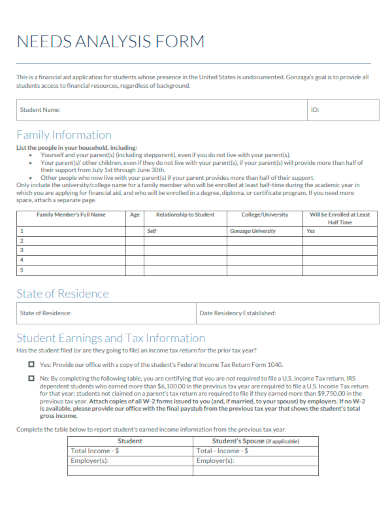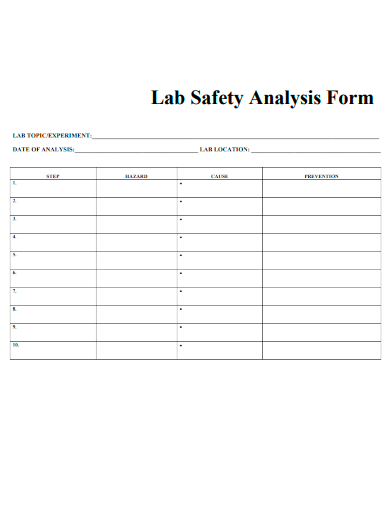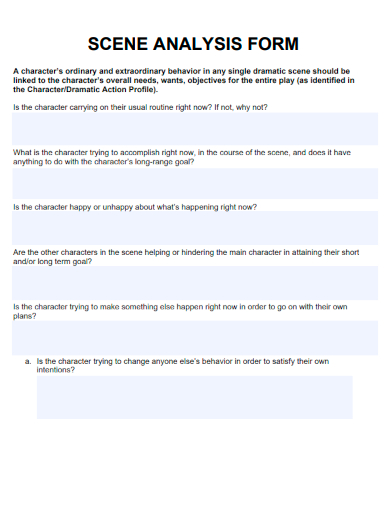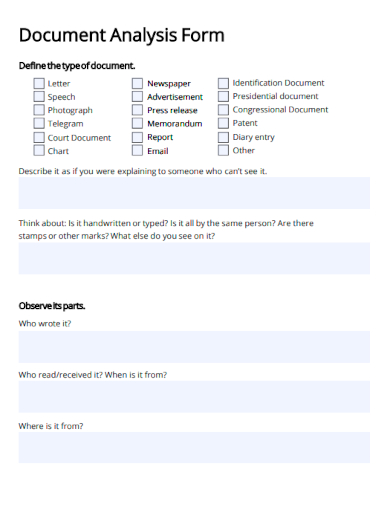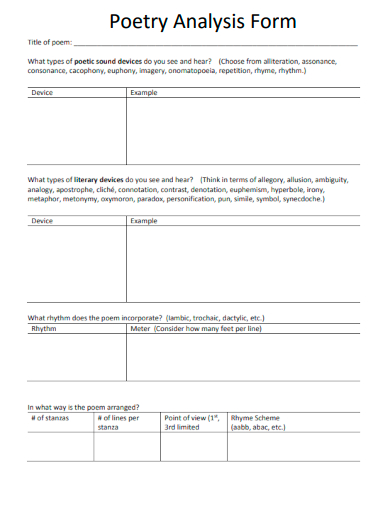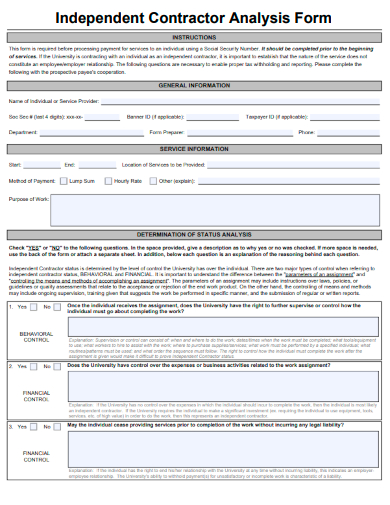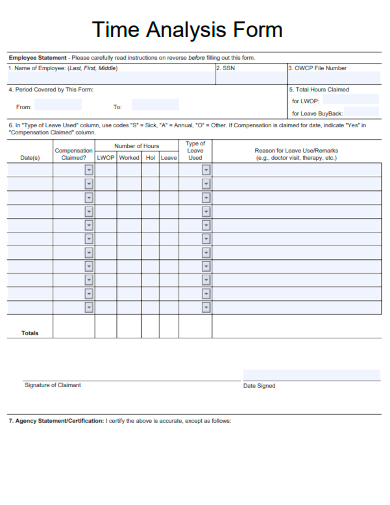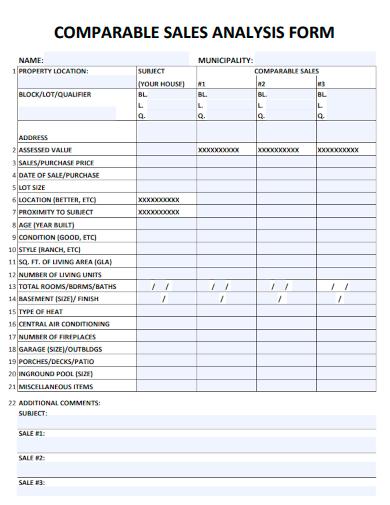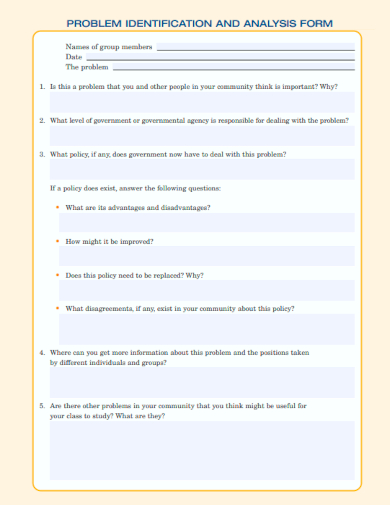AAnalysis refers to an interpretative process that generates conclusions from a list or set of information. Some analyses are written in an essay format and must express their process in a clear and concise manner to ensure effective interpretation by the readers. Analytical or analysis essays utilize the meticulous and methodological evaluation of a single topic to draw a set of conclusions to prove theories.
FREE 16+ Analysis Form Samples
1. Sample Job Analysis Form Template

2. Sample Skills Analysis Form Template
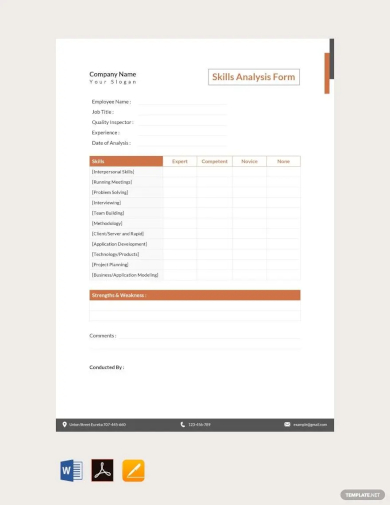
3. Sample Task Analysis Form Template
4. Sample Complaint Analysis Form Template
5. Sample Regulatory Analysis Form Template
6. Sample School Impact Analysis Form Template
7. Sample Needs Analysis Form Template
8. Sample Income Analysis Form Template
9. Sample Lab Safety Analysis Form Template
10. Sample Issue Analysis Form Template
11. Sample Scene Analysis Form Template
12. Sample Document Analysis Form Template
13. Sample Poetry Analysis Form Template
14. Sample Independent Contractor Analysis Form Template
15. Sample Time Analysis Form Template
16. Sample Comparable Sales Analysis Form Template
17. Sample Problem Identification & Analysis Form Template
What is an Analysis Form?
An analysis form is a template that is used to document different kinds of data analysis like SWOT analysis, sales reports, internal business analysis, external business analysis, financial analysis, and performance analysis reports. Analysis reports usually contain information about the topic of analysis, methods used, results, who conducted the analysis, and the approval of the said report. An analysis is a method most commonly used for studies like qualitative research and quantitative research.
How to Write an Analysis Report
Analysis reports are one of the documents that are constantly required in most companies. It is a critical business report that shows analysis reports and feasible suggestions as well as the evaluation of current company performance reports that enable more informed business decisions. These reports can be categorized into different types which are the comprehensive analysis report, thematic analysis report, routine work analysis report, and more.
Step 1: Determine Your Argument
Start by identifying the argument you want to make and support. Make sure that your topic is specific enough to present a clear and focused argument. Your argument will express your position so your readers can better understand what you are claiming out of your analysis.
Step 2: Write Your Thesis Statement
After determining your argument, write your thesis statement in a sentence to summarize your claims. Your claims must be narrow enough to fit in your argument’s scope of work. The thesis statements establish your argument by explaining and providing claims to support the pieces of evidence you will include in the body paragraphs of your analysis.
Step 3: Start Writing Your Introduction and Body Paragraphs
An introduction serves as the readers’ guide to better understand the information being discussed in your analysis in the proper order. Every component of your thesis statement must have its own body paragraphs with the evidence to support its claims.
Step 4: Conclude Your Analysis
The conclusion of your analysis must restate your thesis statement and main arguments. Make sure to write an explanation of the indications of your results or findings to provide answers to any remaining questions that your readers may have.
FAQs
What are the tips when writing your analysis?
When writing your analysis, make sure to explicitly connect your evidence to your argument, all facts must be taken into account, analyze all evidence, and make use of a mind map when collecting and connecting your ideas or thoughts.
What are the basic components of an analytical report?
An analytical report’s basic components include a title page, a table of contents, a clause, the main discussion, conclusions, recommendations, and a bibliography or appendices.
What is the importance of analytical reports on businesses?
Businesses prepare analytical reports to gain insights on how to improve their productivity and sales performance, enhance communication among the teams, increase collaboration, and improve the adaptability of their teams.
The analysis involves the process of breaking down a set of information into component parts, discovering relationships among them, determining the causes, motives, and underlying assumptions, and making inferences as well as researching for evidence to support its explanations or generalizations. In business, analytical reports enable companies to evaluate their decisions based on data insights that they have gathered from an analysis.
Related Posts
FREE 12+ Worksheet Competitor Analysis Templates in PDF MS ...
FREE 19+ Simple SWOT Analysis Templates in PDF MS Word | Excel
FREE 11+ Job Analysis Samples in Excel MS Word | Google Docs ...
FREE 8+ Behavior Analysis Samples in MS Word PDF | Google ...
FREE 10+ Cost Breakdown Analysis Templates in Google Docs ...
FREE 7+ Sample Job Safety Analysis Templates in Excel PDF ...
FREE 14+ Construction Cost Analysis Samples in PDF MS Word
FREE 16+ Sample Real Estate Market Analysis Templates in PDF ...
FREE 9+ Policy Analysis Templates in PDF MS Word
FREE 10+ Primary Source Analysis Samples in PDF
FREE 11+ Sample Analysis Report Templates in Google Docs MS ...
FREE 31+ Analysis Templates in Google Docs MS Word | Pages ...
FREE 9+ Business Plan SWOT Analysis Templates in PDF MS Word
FREE 9+ HACCP Hazard Analysis Templates in PDF MS Word
FREE 12+ Sample Critical Analysis Templates in Google Docs MS ...

